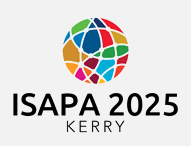Start Date
19-6-2025 12:00 PM
End Date
19-6-2025 1:00 PM
Abstract
An Investigation on Parental Perceived Motor Competence in Children on the autism spectrum
Introduction
Motor delay and abnormalities in children on the autism spectrum (ASD) has raised increasing attention, as they could impact their daily lives and overall development. This study aims to investigate parents' perceptions of motor competency in their children on the autism spectrum across different age groups, thereby providing insight into the changes in their motor development levels.
Methodology
This study recruited 61 parents of children on the autism spectrum. A parental proxy of Perceived Movement Skill Competence (PMSC) was utilized to assess parents’ perceptions of their children's motor competence. Descriptive analysis was conducted on the collected data.
Results
This study revealed a stepwise increase in the overall scores of parents' perceptions of motor competency in their children on the autism spectrum across three divided age groups: 6-7 years (n=14), 8-9 years(n=13), and 10-11 years(n=16), with mean scores of 34.71, 41.85, and 42.82, respectively. Notably, within the 'active play' category, parents of children aged 8-9 years reported a higher mean score (12.62±3.71) compared to those of children aged 6-7 years (11.50±3.08) and 10-11 years (12.06±3.23). This difference was particularly pronounced in activities such as bike riding and scootering.
Conclusions
In summary, parents' perceptions of motor competency in children on the autism spectrum generally improve as the children grow older. However, parental perceived active play skills in children on the autism spectrum showed a decline around the age of 9. Therefore, parents are encouraged to facilitate their children's engagement and learning of active play-related sports activities during the 8-9 year age range to potentially promote their motor development.
References
Wormwood, J. B., Khan, Z., Siegel, E., Lynn, S. K., Dy, J., Barrett, L. F., & Quigley, K. S. (2019). Physiological indices of challenge and threat: A data-driven investigation of autonomic nervous system reactivity during an active coping stressor task. Psychophysiology, 56(12), e13454.
Kleckner, I. R., Wormwood, J. B., Simmons, W. K., Barrett, L. F., & Quigley, K. S.. (2015). Methodological recommendations for a heartbeat detection‐based measure of interoceptive sensitivity. Psychophysiology, 52(11), 1432–1440.
Recommended Citation
Li, Zhihui; Lu, Yuemei; Zong, Chenjun; Zhang, Zichao; and Wang, Xiaozan, "An Investigation on Parental Perceived Motor Competence in Children on the autism spectrum" (2025). International Symposium of Adapted Physical Activity and International Symposium on Physical Activity and Visual Impairment and Deafblindness. 35.
https://sword.cit.ie/isapa/2025/day4/35
An Investigation on Parental Perceived Motor Competence in Children on the autism spectrum
An Investigation on Parental Perceived Motor Competence in Children on the autism spectrum
Introduction
Motor delay and abnormalities in children on the autism spectrum (ASD) has raised increasing attention, as they could impact their daily lives and overall development. This study aims to investigate parents' perceptions of motor competency in their children on the autism spectrum across different age groups, thereby providing insight into the changes in their motor development levels.
Methodology
This study recruited 61 parents of children on the autism spectrum. A parental proxy of Perceived Movement Skill Competence (PMSC) was utilized to assess parents’ perceptions of their children's motor competence. Descriptive analysis was conducted on the collected data.
Results
This study revealed a stepwise increase in the overall scores of parents' perceptions of motor competency in their children on the autism spectrum across three divided age groups: 6-7 years (n=14), 8-9 years(n=13), and 10-11 years(n=16), with mean scores of 34.71, 41.85, and 42.82, respectively. Notably, within the 'active play' category, parents of children aged 8-9 years reported a higher mean score (12.62±3.71) compared to those of children aged 6-7 years (11.50±3.08) and 10-11 years (12.06±3.23). This difference was particularly pronounced in activities such as bike riding and scootering.
Conclusions
In summary, parents' perceptions of motor competency in children on the autism spectrum generally improve as the children grow older. However, parental perceived active play skills in children on the autism spectrum showed a decline around the age of 9. Therefore, parents are encouraged to facilitate their children's engagement and learning of active play-related sports activities during the 8-9 year age range to potentially promote their motor development.
References
Wormwood, J. B., Khan, Z., Siegel, E., Lynn, S. K., Dy, J., Barrett, L. F., & Quigley, K. S. (2019). Physiological indices of challenge and threat: A data-driven investigation of autonomic nervous system reactivity during an active coping stressor task. Psychophysiology, 56(12), e13454.
Kleckner, I. R., Wormwood, J. B., Simmons, W. K., Barrett, L. F., & Quigley, K. S.. (2015). Methodological recommendations for a heartbeat detection‐based measure of interoceptive sensitivity. Psychophysiology, 52(11), 1432–1440.


